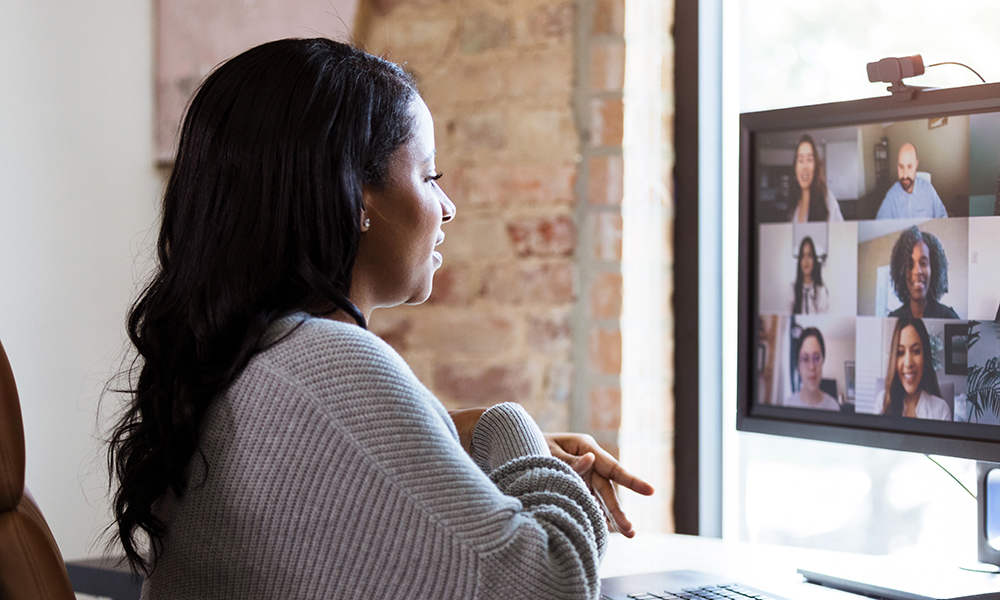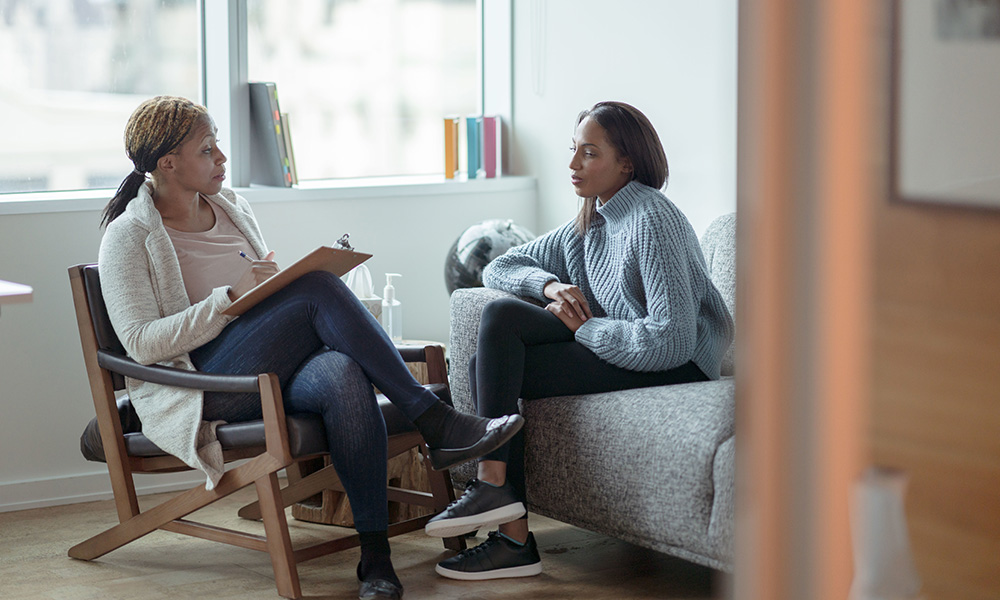
UBC Okanagan experts provide a variety of tips to help make those first few days in the classroom as stress free as possible. Photo by Kenny Eliason on Unsplash.
Between the rush of buying school supplies, new clothes for rapidly growing children and squeezing in a few last days of fun, most parents have very few minutes to think up a strategy for a smooth transition into the new school year.
UBC Okanagan experts are providing some tips—everything from literacy advice, to getting enough sleep and healthy eating—to ensure those first few days in the classroom are a success. These are not only for the parents, but also for those attending school.
“Kindness matters,” says Dr. John Tyler Binfet, Okanagan School of Education and Director of Building Academic Retention through K9’s program
Having students engage in kind acts within the school or broader community not only encourages perspective-taking and optimizes student wellbeing, it also has a reciprocal effect for teachers who themselves are known to experience heightened stress. Kind acts don’t need to be big Broadway productions; rather, they can be quiet acts that only the initiator knows about. These might include:
- leaving hidden sticky notes of encouragement in library books;
- leaving a quarter in the vending machine to surprise the next user; or
- not laughing at a joke that belittles someone
When teachers situate kindness front and centre in the classroom, they support their students’ wellbeing, nurture supportive learning environments where students can thrive and invest in creating a work environment where their best teaching can be showcased.
“Take steps to encourage literacy at home,” says Dr. Jessica Chan, Okanagan School of Education and Director of the Reading, Language, and Mathematics Lab
There are several ways families can support their children’s literacy development at home, even if your child may not enjoy reading independently. Parents and caregivers can share family stories and encourage their children to write or draw the story. It doesn’t have to be a story—it could be a family recipe or learning about the origins of the family. They can read a book together by taking turns and talking about what they’ve read together. Diversify the types of books chosen to read, like fantasy stories, graphic novels and non-fiction. It can help encourage children to explore new interests, which might inspire new learning opportunities.
“Make sure everyone gets a good night’s sleep,” says Dr. Elizabeth Keys, School of Nursing and a member of the Canadian Sleep Research Consortium
A good routine and getting enough quality sleep are vital for school-aged children and teen’s learning and general wellbeing. Parents can estimate how many hours of sleep their children need, what time they need to get up and how much time is necessary to get ready in the mornings. Then set the alarm clock—and bedtime—accordingly.
Parents can also do a few things to help with the process:
- Limit screens one hour before bed,
- Find a way to relax like reading or listening to music or a podcast an hour before bed
- Get plenty of bright light in the morning
- Getting enough physical activity during the day
- Keeping the routine going seven days a week and maintaining a regular sleep-wake schedule, even on weekends
“Pack a well-nourished lunch,” says Dr. Sally Stewart, School of Health and Exercise Sciences
A lunch kit packed with nourishing food goes a long way to fuel the brain and the body and getting children involved when it comes to packing lunches—including taking them shopping, helping with the cooking and packing their own lunches—so they will be more likely to eat what they pack.
Have drawers or bins in your fridge and cupboards organized into three groups:
- fruits and veggies
- proteins including cheeses, lean meats, hardboiled eggs, nut butters, seeds and yogurts
- grains such as crackers, muffins, pitas and cereals.
Make sure there is at least one item from each bin in the lunch. Let them choose what, and how much.
Finally, having fun and colourful containers and reusable bags is fun for your children but also good for the environment. Balance and variety in food choices and having foods that you and your children enjoy are a part of nourishing life.
“It’s not too soon to talk about vaping devices and nicotine pouches,” says Dr. Laura Struik, School of Nursing
New nicotine products, like the increasing variety of vaping devices or the recent introduction of nicotine pouches this past year, have proliferated school environments, including the elementary grades. It is never too early to talk with children and teens about these products.
It is important to recognize that use of these products among youth is strongly tied to how they become embedded in youth cultures both online and offline, including in schools. Having conversations with your children about what they observe and think about these products and how their friends are navigating these products, is a critical step towards protecting them.
These conversations can confirm that they have a safe, non-judgmental space to chat, will prompt them to critically think about their options, might bring forward questions and opportunities to collaboratively find answers and ultimately, can empower them with making an informed choice before entering the classroom.
“Check your child’s vaccine status for any outstanding vaccines,” says Dr. Marie Tarrant, School of Nursing
Interior Health notes that childhood vaccination rates show that 69 per cent of two-year-old children and 55 per cent of seven-year-old children are immunized against illnesses such as measles, rubella, mumps and polio, far below its goal of 95 per cent.
Regarding immunizations, it is important for parents to speak with someone they trust—whether it’s a family doctor, public health nurse or nurse practitioner—about the safety and effectiveness of vaccines. Primary health-care providers may be reluctant to have those conversations because they have a trusting relationship with their clients. But it’s important that all primary health-care providers assess children’s vaccine status and then have those conversations with parents, because they’re often the most trusted person in their network.
“Be prepared for emotional changes, which are normal at this time of year,” says Dr. Jessica Lougheed, Psychology, Irving K. Barber Faculty of Arts and Social Sciences
Children and teens might feel excited, nervous, anxious, happy, scared or several of these feelings all at once. Teens may be more irritable than usual or have more intense emotions than typical. Remember that anxiety can breed avoidance. Children and teens, even adults, will often procrastinate on things they find stressful. However, avoidance often comes with the ironic consequence of adding stress in the long term, even if it reduces stress in the short term. Putting things off can lead to consequences such as not having enough time to complete a task well. If you notice anything that looks like procrastination or avoidance, see if you can help your child or teen break up the scary task into smaller, more manageable tasks.
Have patience. Returning to school in the fall means that every single person’s schedule in the home is going to change to some extent. It may take a few weeks before everyone feels comfortable with the change.
Finally, savour the positive things. Being grateful for the good things that can show up at this time of year can help you stay level-headed if and when things don’t go as expected. Your children will be in school only for so long.
“Test out a trial run, before school starts,” says Dr. Shirley Hutchinson, Psychology, Irving K. Barber Faculty of Arts and Social Sciences
One major reason we feel anxious or nervous is due to uncertainty. It’s human nature to want to know what to expect so we can plan accordingly. Unfortunately, we can’t always predict every outcome and this lack of certainty can generate uncomfortable feelings. But don’t worry—one effective way to manage these feelings is by reducing uncertainty. For example, if your child is nervous about taking the bus on the first day of class, do a practice run to familiarize them with the route. If they are concerned about finding classrooms, visit the school ahead of time. The more information you gather, the less anxious they will feel because you’re reducing the unknown.
Remember, feelings of nervousness and anxiety are similar in arousal to excitement and anticipation; it’s all about how you interpret these feelings. The first day of class can either be scary or exciting; it’s up to you to choose how you label it.
The post UBCO experts provide tips for heading back to school appeared first on UBC Okanagan News.






